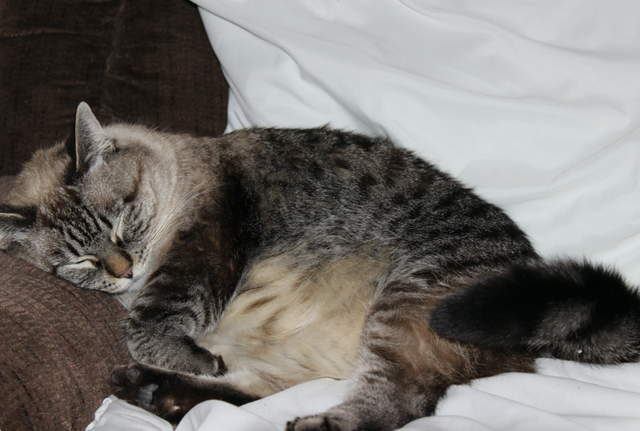
Plants like Hawthorn and Hibiscus have been used for hundreds of years!
Modern research supports the use of traditional plants!
Remember, what happens to your heart will impact your
- Blood Vessels
- Circulation
- Organs
and therefore, your fullness of life!
For example,
as reported by Tori Hudson, ND
- graduated from the National University of Naturopathic Medicine (NUNM) in 1984
- has served the college in several capacities.
- She is currently a clinical professor at NUNM, Southwest College of Naturopathic Medicine, and Bastyr University.
- Hudson is the medical director of A Woman’s Time in Portland, Oregon
- director of product research and education for VITANICA.
- She is the founder and codirector of Naturopathic Education and Research Consortium known as NERC [a nonprofit organization for accredited naturopathic residencies]
- Hudson is a faculty member of the Fellowship in Integrative Health & Medicine, Academy of Integrative Health & Medicine.
Abstract
Crataegus oxyacantha (hawthorn) and Hibiscus sabdariffa (sour tea) have a long history of use in traditional botanical medicine in many parts of the world for their multiple health effects, but especially in relation to cardiovascular disorders. In the last 15–20 years, modern research has expanded and clarified those uses. Hawthorn research has focused on congestive heart failure, and sour tea research has focused on hypertension and dyslipidemia, with several clinical trials emerging in the last 3–4 years. This article highlights key research on these two plants and their uses in congestive heart failure, hypertension, and dyslipidemia in particular.
Consider that. . .
Cardiovascular disease is the most common cause of office visits, hospitalizations and death in the United States. More than 650,000 people die each year of heart disease. Heart disease is the leading cause of death for both men and women. Half of the deaths due to heart disease are in women. Coronary heart disease is the most common type of heart disease, causing approximately half a million deaths per year. Every year about 785,000 Americans have a first heart attack. Another 470,000 who have already had one or more heart attacks have another attack. In 2010, heart disease cost the United States $316.4 billion.
With this daunting state of our national health, practitioners of all philosophies and training must advance their skills in assessing risk factors, diagnostic work-ups, prevention strategies, and therapeutic interventions. While the list of lifestyle and natural therapies pertinent to cardiovascular issues is long with standouts such as smoking cessation, weight management, stress reduction, Mediterranean diet, fish oils, nicotinic acid, coenzyme Q10, and so many more, botanicals with a rich historical tradition—as well as modern research—are worth a studious look to understand how and when to best use them, as well as their limitations.
Hawthorn (Crataegus species)
Hundreds of crataegus species exist; most are thorny shrubs and small trees whose berries, flowers, and leaves have been used in traditional herbal medicine througout Europe and the United States for generations. Hawthorne is widely used in Europe as a cardiotinic and for congestive heart failure.
The principle active components in hawthorn leaves, berries, and blossoms are flavonoids. One of these flavonoids, proanthocyanidin, has especially important cardiovascular effects.
Research has been conducted on various hawthorn preparations, with the majority using a proprietary preparation from the leaf and flowers (L1 132; WS 1442). Other preparations include leaf and flower combinations with and without the berries, aqueous extracts, methanolic extracts (L1 132; Faros), ethanolic extracts (Esbericard, Crataegutt), dried blossoms, and a flavonoid extract (Crataemon).
The exact mechanisms of action for hawthorn and cardiovascular disease is uncertain, but it is thought that the primary activity is its ability to increase coronary arterial blood flow, perhaps due to dilation of the coronary arteries. The inotropic effects may be due to inhibition of myocardial sodium/potassium ATPase. Hawthorn also appears to slightly increase the strength of the cardiac muscle contractions and decrease blood pressure, resulting in increased exercise tolerance and protection against congestive heart failure. Hawthorn has also been shown to exhibit antioxidant activity in a number of studies, which is likely due to its flavonoid and procyanidin constituents.
Numerous randomized, placebo-controlled clinical trials report hawthorn’s ability to improve exercise capacity, alleviate symptoms of cardiac insufficiency, and treat mild to moderate congestive heart failure (CHF), the area of the most research.
The largest, recent, and well-known study, The Survival and Prognosis: Investigation of Crataegus Extract WS 1442 in Congestive Heart Failure (SPICE) trial, was designed to assess the safety of a standardized hawthorn extract, WS 1442, and its effects on morbidity and mortality in patients with New York Heart Association (NYHA) class II and III CHF; hawthorn was used in addition to optimal standard care. The randomized, multicenter, double-blind, placebo-controlled study enrolled 2,681 patients and was performed at 156 centers in 13 European countries. Patients with NYHA class II and III CHF and reduced left ventricular function ≤35%) were randomized to either the study medication (450 mg WS 1442 twice daily) or placebo in addition to conventional treatment for 24 months.
WS 1442 had no impact on the primary endpoint (composite endpoint of cardiac mortality, nonfatal myocardial infarction, and hospitalization due to progression of heart failure), with a rate of 27.9% in the treatment group vs 28.9% in the placebo group. In addition, after 24 months there was no difference in the rates of cardiac mortality or sudden cardiac death between the 2 groups. However, in a subgroup analysis of patients with a left ventricular ejection fraction (LVEF) ≥25%, sudden cardiac death was significantly lower in the WS 1442 group. These particular findings highlight the potential anti-arrhythmic and/or anti-ischemic mechanisms of hawthorn extract. Although add-on treatment with WS 1442 did not show a significant difference in cardiac death, non-fatal myocardial infarction, or hospitalization due to significant heart failure, it did reduce sudden cardiac death, which is more prominent in patients with LVEF between 25% and 35% (the upper limit for inclusion in the study). The SPICE trial was more rigorous in its primary endpoints related to heart failure when compared to the other studies below, which looked more at symptoms of dyspnea, fatigue, and cardiac performance. The SPICE trial demonstrates to clinicians that perhaps we cannot reduce the sudden death and myocardial infarctions associated with CHF unless the patient has a less compromised left ventricular function. While its effect on morbidity and mortality is not conclusive, strong evidence suggests symptoms and quality of life related to CHF may be improved with the use of hawthorn extracts.
A meta-analysis of studies using hawthorn for chronic cardiac failure provided evidence of its efficacy in chronic heart failure. This systematic review of controlled trials revealed that hawthorn extract was significantly more beneficial than placebo for maximal workload. Symptoms of dyspnea and fatigue also decreased significantly with hawthorn compared with placebo.
In 1996, a systematic review was done of 7 controlled trials that met the NYHA class I or II heart failure criteria. These studies demonstrated clinical improvement with hawthorn extract with decreases in symptoms and objective evidence of efficacy most often proven by exercise ergometry.
Additional randomized studies have also been positive. In a 1974 study, 10 mg hawthorn berry and 30 mg hawthorn leaf was added to a nitrate.10 In 25% of the patients with severe coronary sclerosis and congestive heart failure, the combination of drug treatment and hawthorn was superior to drug treatment alone.
A 1984 trial using 360–1,600 mg/day of hawthorn extract demonstrated improvement in overall cardiac performance in the treatment group (77%) vs placebo (49%). With further analysis, only those patients with NYHA class II CHF showed significant improvement. No improvement was seen with NYHA class III CHF.
Another randomized placebo-controlled multicenter trial involved 143 adults with NYHA class II heart failure.Participants were given 30 drops 3 times per day of hawthorn extract tincture of fresh berries or placebo for 8 weeks. After 8 weeks, a significant increase in exercise tolerance and a non-significant improvement in blood pressure and heart rate was seen in the hawthorn group compared with placebo, but no differences were seen in cardiac symptoms. In an uncontrolled trial, 1 tablet of a 450 mg hawthorn extract (WS 1442) was given for 24 weeks to 1,011 patients with NYHA class II CHF.13 Edema of the ankle completely resolved in 83% of patients and nocturia in 50%. The primary measured outcome was a change in exercise tolerance as determined by bicycle exercise testing. Patients assessed their cardiac symptoms at rest and at higher levels of exercise by using a categorical rating scale.
Ejection fractions improved, and two-thirds of the patients felt subjectively better after the hawthorn extract.
Direct comparison trials using hawthorn vs conventional medications are limited but one compared hawthorn to captopril in the treatment of CHF. One hundred thirty-two patients with NYHA class II CHF received either 900 mg/day in 3 doses or 37.5 mg/day of captopril. Cardiac performance significantly increased, and symptoms decreased in both groups with no statistically significant difference.
Another direct comparison study compared a homeopathic preparation of hawthorn vs an ACE inhibitor plus diuretic.15 This non-randomized cohort study included 212 adults with NYHA class II heart failure. After 8 weeks, there was no statically significant difference between the groups in 15 measurable variables, and only a greater reduction in blood pressure in the standard therapy group.
Studies on hypertension are limited. A 2006 study of 79 diabetic hypertensive patients who received 1,200 mg hawthorn vs placebo for 16 weeks found modest reductions in diastolic measures in the active treatment group. A significant mean diastolic blood pressure reduction was seen (85.6 mmHg at baseline to 83 mmHg after 16 weeks), and the placebo group was an average of 84.5 mmHg at baseline and 85 mmHg post treatment. There was no group difference in systolic blood pressure reduction from baseline for either hawthorn or placebo. Two randomized, controlled trials found decreases in blood pressure measures. Ninety-two men and women with mild hypertension achieved a significant decrease in both systolic and diastolic blood pressure after 3 months with C. curvisepala.17 The second study showed a significant difference between the 1,200 mg of hawthorne extract and placebo group in diastolic blood pressure over a period of 16 weeks. There were no differences in systolic blood pressure.
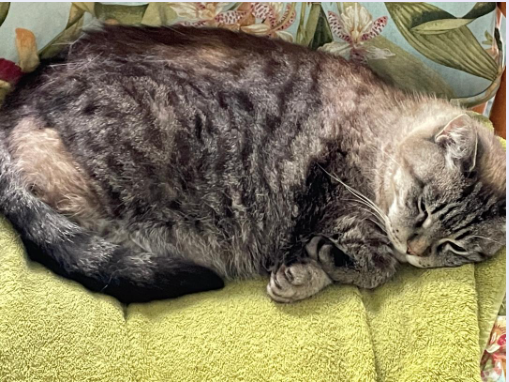
Individuals suffering from angina may also benefit from hawthorn. In one small study, 100 mg 3 times daily of crataegus extract or placebo was given for 4 weeks. Angina decreased in 91% of patients in the hawthorn group vs only 37% in the placebo group; 45% of the patients in the hawthorn group completely stopped their nitroglycerine, compared with 25% in the placebo group.
Hawthorn preparations are modestly effective in reducing blood pressure, preventing and treating atherosclerosis, lowering cholesterol, and preventing the oxidation of low-density lipoprotein (LDL). Hawthorn preparations may improve the blood supply to the heart by dilating the coronary arteries, increase the force of contraction of the heart muscle, and regulate cardiac rhythm
Hibiscus also known as Sour Tea
Hibiscus sabdariffa, or sour tea, is a genus of the Malvaceae family. In Iran, it is typically known as sour tea; in English-speaking countries is it called red sorrel. Originally from Angola, it is now cultivated throughout tropical regions, especially from Sudan, Egypt, Thailand, Mexico, and China.
The calyces of H. sabdariffa are prolific in many modern commercial blends of cold and hot drinks due to it’s pleasing taste. Approximately 15–30% of the plant is made up of plant acids, including citric, malic, and tartaric acids, as well as and allo-hydroxycitric acid lactone (ie, hibiscus acid), which is specific to this plant. Other chemical constituents include alkaloids, L-ascorbic acid, anthocyanin, beta carotene, beta sitosterol, citric acid, polysaccharides (arabins and arabinogalactans), quercetin, and gossypetin, as well as small amounts of galactose, arabinose, glucose, xylose, mannose, and rhamnose.
Historically, folk medicine has employed H. sabdariffa for the treatment of high blood pressure, liver diseases, and fevers. In large amounts, hibiscus tea acts as a mild laxative.
In African folk medicine it has been used for its spasmolytic [relieve muscle spasms], antibacterial, cholagogic [promoting the flow of bile], diuretic [removes fluids and salts], and anthelmintic [destroys parasites and worms] properties.
Scientific interest in Hibiscus has grown in the last several years with a small burst of published research studies, especially in the area of dyslipidemia and hypertension. More than 20 years ago, water extracts of hibiscus flowers were reported to have a relaxation effect on the uterus and to lower the blood pressure.26 Studies in both animal and human models have demonstrated that extracts and infusions affect atherosclerosis [thickening or hardening of the arteries] mechanisms, blood sugar, lipids, and blood pressure.
Motherwort Extract
Also great for cats and dogs!

This week's herb is motherwort (Leonurus cardiaca).
When I see motherwort, I always think of its great attributes for heart conditions. Specifically, for the over-rapid heartbeat that is brought about by anxiety, tension, and similar conditions. When used for heart maladies, it will strengthen the heartbeat while lowering high blood pressure. It is also a great herb for:
Circulatory issues
Promoting menstruation
Regulating menses
Aiding in childbirth
Insomnia
Neuralgia
Sciatica
Spasms
Fever
Stomachaches
Asthma
Other properties demonstrated by motherwort include antispasmodic, hypotensive, sedative, diuretic, antioxidant, immune-stimulating, nervine, anthelmintic, laxative, and cancer-preventative activity. Motherwort should be avoided during pregnancy and lactation.
Dandelion Root Useful for Heart Disease and other symptoms? You decide!
According to Dr. Magda
In holistic veterinary practice, we use Dandelion for two primary reasons: To assist digestion and increase bile flow through the liver/gallbladder as well as for its diuretic effects for animals with heart disease.
There is some confusion about how to use Dandelion for pets:
It turns out, that Dandelion root is most helpful for digestive and liver support, while the leaves have stronger diuretic properties.
I have seen quite a few pet owners use Dandelion root for a pet with heart disease and felt like it wasn’t helping. The root has some mild diuretic effects, but the leaves are actually more useful for this effect.
I used dandelions in a Sunday School lesson once!
Weed or Blessing? You decide!
Dr. Magda states,
When most of us think of Dandelions, our first association may be: pesky weeds. Or, we may have pleasant memories of making wishes and blowing dandelion seeds into the wind.
Dandelion is a fairly ubiquitous plant that many of us take for granted.
However, it turns out that Dandelion can have quite a few health benefits both for us and for our pets!
(In this article, we will focus on pets. However, many of the same uses apply for humans).
The earliest recorded history of using Dandelion comes from the 7th century as a Chinese herbal medicine. In the 11th century, Arabian physicians referred to it as Taraxacon.
Its first recorded use in Europe was in 1485. At the time, a surgeon referred to it as a “dent-de-lion”, or translated from French to mean – a Lion’s Tooth, due to the shape of its leaves. This name eventually became the “dandelion” name that we use today.
Another common name for Dandelion at the time was “piss-a-beds,” showing that the diuretic qualities of Dandelion were known even back then!
Native Americans used Dandelion for food and for digestive problems.
In Italy, the sap was used for warts!
Some used Dandelion, as it is more traditionally used today, as a “digestive bitter” – to help improve digestion and for its mild laxative effects.1
Cat with dandelions
Dandelion Herb Uses For Pets
In holistic veterinary practice, we use Dandelion for two primary reasons: To assist digestion and increase bile flow through the liver/gallbladder as well as for its diuretic effects for animals with heart disease.
There is some confusion about how to use Dandelion for pets:
It turns out, that Dandelion root is most helpful for digestive and liver support, while the leaves have stronger diuretic properties.
I have seen quite a few pet owners use Dandelion root for a pet with heart disease and felt like it wasn’t helping. The root has some mild diuretic effects, but the leaves are actually more useful for this effect.
Dandelion root stimulates bile production and increases circulation thoughout the liver.
The liver is the organ responsible for filtering toxins and removing excesses from the body and blood. The liver also plays a critical role in digestion through its production of bile, bilirubin, and certain enzymes. When bile becomes stuck, we may see sludge form in the gallbladder (people may develop gallbladder stones, while pets are more prone to sludge).
In Chinese medicine, when energy or blood is stagnant in the liver, this can lead to certain emotional imbalances and physical disease. One of the most common emotional imbalances that results from liver stagnation is frustration and/or anger. If you want to learn more about this topic and how it shows up in pets, see my blog post here.
Due to its bile-moving effects, Dandelion root is a common herb used for improving digestion, cholecysteititis, and jaundice. It has also shown to be useful for some cases of constipation, pancreatitis, and triaditis (IBD) in cats.
** Dandelion Root is contraindicated in cases of acute bile duct obstruction, acute gallbladder inflammation and intestinal obstruction. Please speak with your holistic veterinarian if you have questions on this topic.**
While the root is more useful for liver problems, Dandelion leaves have more of a diuretic effect, meaning that they help remove excess fluid out of the body.
This is particularly useful for animals with heart disease. When the heart pumps blood less effectively (for a number of reasons), excess plasma from blood vessels will seep out into the lungs.
This fluid in the lungs can cause a pet to cough more.
One of the common pharmaceutical approaches is to give Lasix, or Furosemide. This is a diuretic that helps to prevent fluid accumulation in the chest. However, Lasix can sometimes negatively affecting the kidneys.
I have not personally seen or heard of negative effects of Dandelion on the kidneys. While it efficacy for diuresis can be variable, dandelion appears to be a safe treatment for animals that cannot handle the negative side effects of Lasix.
Dandelion Herb for Pets
Doses and Administration Of Dandelion Herb For Pets
There are some OTC commercially available versions of Dandelion for pets (See affiliate disclaimer at the end of this article).
If you are looking to support a pet with heart disease, then a combination of Hawthorne berries and Dandelion Leaf may be beneficial, such as the product Heart Care made by Amber Naturals.
If you are looking to support your pet’s gastrointestinal tract and liver, then a product with higher concentrations of Dandelion Root combined with Milk Thistle may be beneficial. One example is Hawaiipharm Dandelion/ Milk Thistle Combination. I like that this formula does not include alcohol.
Doses for both of these products are available on the bottle and given by weight.
If you would like to give Dandelion on its own, here are some other doses that may be useful:
Infusions and teas: 5-30grams per cup of water. Give 1/8 cup of tea per 20 lbs of body weight twice a day.
Leaf (Usually in 25% ethanol): 1:2 or 1:3 ratio; Give 0.5 ml per 20 lbs of weight twice a day
Root or whole plant (Usually in 25 – 70% ethanol) 1:2 – 1:3 ratios; Give 0.5cc per 20lbs of body weight twice a day
I hope you found this information helpful!
Veterinary Herbal Medicine; Susan G. Wynn and Barbara Fougere; Mosby Press; 2007.
To see more information and what the Hawthorn bush looks like go here,
Herb for Dog and Cat Heart Help
Remember, what happens to your heart will impact your
- Blood Vessels
- Circulation
- Organs
and therefore, your fullness of life!
Proverbs 4:23 KJV
Keep thy heart with all diligence; For out of it are the issues of life.
In a human, the heart is about the size of your fist.
The heart is connected to 60,000 mile of blood vessels that course throughout the human body.
If all the blood vessels were pulled out and lined up end to end as one thread, they would wrap around the earth 2 times!
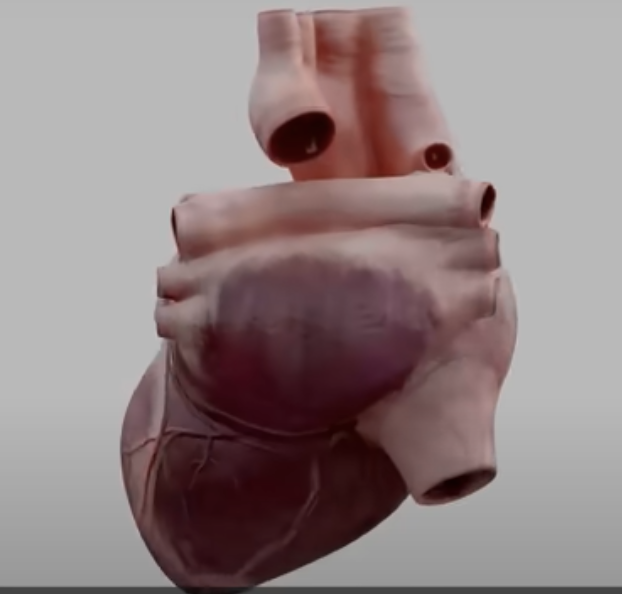
Every beat, every pump jets out blood to these connected highways of your blood vessels which bring
- all the nourishment
- all the blood
- all the growth factors
to every cell found in every organ in your body!
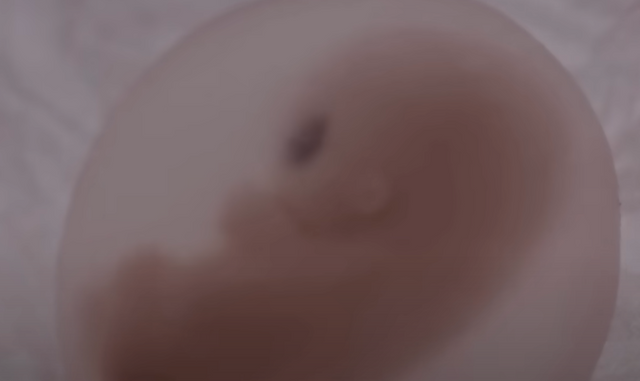
When you were formed in your mother's womb,
one of the first organs formed was your heart and your circulatory system!
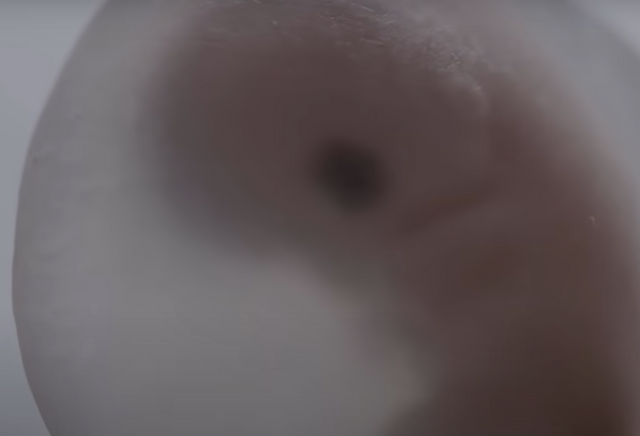
They formed with stem cells.

These stem cells begin to organize themselves upon fertilization to form these channels.
They are known as First Lakes [blood lakes]!
Before they formed tributaries, streams.
Until they are left with one area, the heart.
Which has muscles and it's own electrical system!
So your heart and blood vessels were formed together at the very beginning!

This means what happens to your blood vessels will affect your heart.
Blood vessels in a body that is balanced and nourished with healthy food are elastic so that when your heart pumps, they will stretch in order to accommodate the blood.
In a normal capillary [remember, these are the smallest blood vessels that lead into the organs to feed the cells] they are so small they are as thin as a human hair.
The diameter of a capillary is smaller than a single blood cell.
So in order to jet blood through it, this is why it Must stretch for blood to go through.
This is even in a normal blood cell, this stretching has to occur and will occur in a body that is in balance and not at dis ease or what is now called disease.
This delivers the oxygen rich, red blood cells and if they are not able to do this, it is like choking or starving the organ.
Shortly after if they are cut off, your organs stop functioning.
The ultimate malfunctions are organ failures and in the brain. . .a stroke.
This can also happen to the heart.
The heart has it's own circulation.
If the heart's circulation gets blocked then you have a heart attack.
Many people only think of aging as what people look like on the outside.
The moment someone is born, the moment you take your first breath, the 3d realm's count of time as they know it starts.
Is this only a #SocialConstruct of aging?
What if it's actually just a journey where advancement occurs and how would one's perception and physical being actually progressed if there were not a time contruct?
In other words, is it in your destiny or even your pet's for blood vessels to get damaged over time or are their choices and information missing?
Can the process many are programmed to think happens naturally be slowed down or even reversed?
What if it never needed to happen at all?
If you give them an intensive lifestyle change starting with their diet.
For humans, high fiber foods will feed their gut microbiome.
Now the gut bacteria can restore their community and ecosystem.
They are now working in your favor so you can eat more foods made up of fruits, vegetables, nuts and legume seeds that actually renew, regenerate the damaged lining.
Just as your skin and hair renews itself, there is a renewal of the blood vessels.
So if you eat foods that can restore natural regeneration of the blood vessels like anthocyanins that are present in [for humans]
dark chocolate, blueberries, eggplant for example,
then they will help to replace and renew those old, damaged liner cells in your blood vessels.
Omega 3's are better than butter, palm oil and many other fats.
You can get healthy Omega 3's from nuts and seeds.
You can also get them from seafood which has always been known to be healthy for the heart.
This helps to resolve any regenerative material and plaque that has accumulated, then replace it with new healthy cells.
The heart disease can literally be reversed!
Diet is only part of the equation.
Regular physical activity is healthy as it gets your blood flowing.
Lowering stress and regular, consistent sleep patterns.
Did you know,
Dean Michael Ornish is an American physician and researcher. He is the president and founder of the nonprofit Preventive Medicine Research Institute in Sausalito, California, and a Clinical Professor of Medicine at the University of California, San Francisco
He is known for. . .
Dr. Dean Ornish is the first clinician to offer documented proof that heart disease can be halted, or even reversed, simply by changing your lifestyle.

#Hawthorn, #HoisticVet, #Herbs, #NaturalHealing, #Cats, #Dogs, #HolisticMedicine, #NaturalRemedies, #Motherwort, #DandelionRoot, #Hibiscus
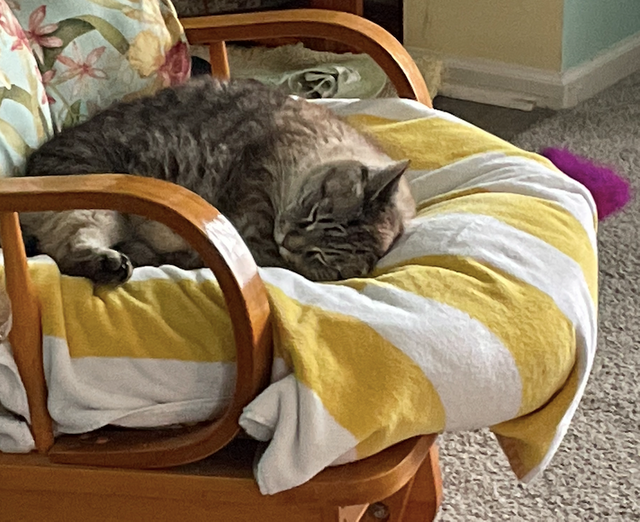
Self renewal
prevent dis ease
repair disease!
What is Farmacy INSTEAD of Pharmacy or Pharmakia?
Can Food Reactivate Your Stem Cells? | Dr. William Li
In cases of idiopathic pericardial effusion
or excess fluid around the heart.
As you will remember, the pericardium is the membranous sac enclosing the heart.
If too much fluid builds up, it can put pressure on the heart. This can prevent it from pumping normally.
Pericardial effusion may be due to infection with a multitude of viral, bacterial, fungal, and even parasitic pathogens. Inflammatory/rheumatologic: Numerous auto-immune disorders, including systemic lupus erythematosus, rheumatoid arthritis, and Sjogren syndrome, can cause a pericardial effusion.
In cats, the most common cause of pericardial effusion is heart failure.
This heart failure is often associated with hypertrophic cardiomyopathy.
Hypertrophic Cardiomyopathy (HCM) is the most common form of heart disease in cats that results in thickening of the heart muscle.
Most feline cardiomyopathies are primary diseases—those whose origins are either genetic or unknown. Some, however, are secondary diseases—those whose causes are specifically identifiable, such as hyperthyroidism or high blood pressure.
Three types of the disorder account for nearly all cardiomyopathies. The most common type by far is hypertrophic cardiomyopathy. Developing with no feasible explanation other than the strong likelihood of hereditary influence, this condition—which occurs most often in male cats—is characterized by a thickening of the muscle tissue associated with the left ventricle. This thickening results in poor heart function and, sometimes, obstruction of blood flow from the heart. It also causes the upper heart chambers to become enlarged. The consequence of these combined factors is a condition in which the heart fails to relax fully and fills with circulating blood. This can result in increased fluid pressure in the lungs and shortness of breath. In addition, blood clots may develop in the left atrium. If a clot breaks up, small pieces of it may circulate and eventually lodge in an artery leading to the legs. This may cause the sudden onset of lameness or paralysis, often accompanied by severe pain.
See for sourced studies
Bahourun T, Gressier B, Trotin F, et al. Oxygen species scavenging activity of phenolic extracts from hawthorn fresh plant organs and pharmaceutical preparations. Arzneim Forsch Drug Res. 1996;11:1086-1089
Bahourun T, Trotin F, Pommery J, et al. Antioxidant activities of Crataegus monogyna extracts. Planta Med. 1994;60:323-328.
Brehm M, Schiller E, Zeller W. Comparable antitumor activity of coxorubicin plus two radical scavenging plant extract preparations (Ginkgo biloba, Crataegus oxyacantha) and of doxorubicin alone. Contrib Oncol. 1995;48:48-52.
auchert M, Ploch M, Hubner W. Effectiveness of hawthorn extract LI 132 compared with the ACE inhibitor captopril: multicenter double-blind study with 132 NYHA Stage II. Munch Med Wochenschr. 1994; 136 (suppl 1): S27-S33.
Schroder D, Weiser M, Klein P. Efficacy of a homeopathic Crataegus preparation compared with usual therapy for mild (NYHA II) cardiac insufficiency: results of an observational cohort study. Eur J Heart Fail. 2003;5(3): 319-326.
Walker A, Marakis G, Simpson E, et al. Hypotensive effects of hawthorn for patients with diabetes taking prescription drugs: a randomised controlled trial. Br J Gen Pract. 2006 Jun;56(527):437-443.
Walker A, Marakis G, Morris A, Robinson P. Promising hypotensive effect of hawthorn extract: a randomized double-blind pilot study of mild, essential hypertension. Phytother Res. 2002 Feb;16(1):48-54.
WEng W, Zhang W, Liu F, et al. Therapeutic effect of Crataegus pinnatifida on 46 cases of angina pectoris—a double blind study. J Tradit Chin Med. 1984;4(4):293-294.
Petkov V. Plants with hypotensive, antiatheromatous and coronary dilating action. Am J Chin Med. 1979;7:197-236.
Wegrowski J, Robert A, Moczar M. The effect of procyanidolic oligomers on the composition of normal and hypercholesterolemic rabbit aortas. Biochem Pharm. 1984;33:3491-3497.
Adegunloye B, Omoniyi J, Owolabi O, et al. Mechanisms of the blood pressure lowering effect of the calyx extract of Hibiscus sabdariffa in rats. Afr J Med Med Sci. 1996;25:235-238.
Ali M, Salih W, Mohamed A, Homeida A. Investigation of the antispasmodic potential of Hibiscus sabdariffa calyces. J Ethnopharmacol. 1991;31:249-257.
Odigie I, Ettarh R, Adigun S. Chronic administration of aqueous extract of Hibiscus sabdariffa attenuates hypertension and reverses cardiac hypertrophy in 2K-1C hypertensive rats. J Ethnopharmacol. 2003;86:181-185.
Chen C, Chou F, Ho W, et al. Inhibitory effects of Hibiscus sabdariffa L extact on low-density lipoprotein oxidation and anti-hyperlipidemia in fructose-fed and cholesterol-fed rats. J Sci Food Agr. 2004;84:1989-1996.
Herra-Arellano A, Flores-Romero S, Chavez-Soto M, Tortoriello J. Effectiveness and tolerability of a standardized extract from Hibiscus sabdariffa in patients with mild to moderate hypertension: a controlled and randomized clinical trial. Phytomedicine. 2004;11:375-382.
Mozaffari-Khosravi H, Jalali-Khanabadi B, Afkhami-Ardehani M, Fatehi F. Effects of sour tea (Hibiscus sabdariffa) on lipid profile and lipoproteins in patients with Type II diabetes. J Altern and Comp Med. 2009;15(8):899-903.
Gurrola-Diaz C, Garcia-Lopez P, Sanchez-Enriquez S, et al. Effects of Hibiscus sabdariffa extract powder and preventive treatment (diet) on the lipid profiles of patients with metabolic syndrome (MeSy). Phytomedicine. 2010;17:500-505.
Flying ships on Ascension Island? Wideawake Airfield. Goose surgery. FB censors human trafficking
https://rumble.com/v20stic-flying-ships-on-ascension-island-wideawake-airfield.-goose-surgery.-fb-cens.html
Or if your browser allows it, you can watch here,
https://www.bitchute.com/video/eFWEtUTdvB1A/
Downvoting a post can decrease pending rewards and make it less visible. Common reasons:
Submit